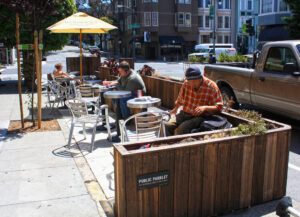 Recent research assessed the benefits of social media channels in building a sense of community in new urban villages. Tina Patel, who conducted the research, talks through the findings
Recent research assessed the benefits of social media channels in building a sense of community in new urban villages. Tina Patel, who conducted the research, talks through the findings
New urban villages often contain diverse residents, with varied and conflicting backgrounds, who are all learning to neighbour at the same time.
They contain a mix of homes, with further diversity emerging from residents’ ownership and residential status. It is a common perception that these factors combine to ripen the risk of neighbourhood conflict, particularly conflict that emerges from noise disturbance, car parking disputes, inadequate property maintenance in communal areas and disagreement over the use of shared access spaces.
Last year I completed a research project that examined the ways in which residents in a new urban village which, for reasons of anonymity and confidentiality, I call ‘Kindley Field’, engaged in neighbouring activities using two Facebook pages, referred to here as: ‘KF1’ and ‘KF2’.
Using data gathered from 70 questionnaires, this article discusses some of the key findings of the project.
The KF1 Facebook page had a closed group membership of 2,883 people, and ran as a general chat group for all residents and community members, while KF2 had a closed group membership of 1,245, and promoted itself as a chat group specifically for mothers.
Developers and community representatives actively encouraged residents to use these Facebook pages to build positive neighbourly relationships and develop neighbourhood pride, which included establishing informal ‘rules’ about acceptable neighbourly behaviour.
It was clear from the outset that not all village residents were members of the Facebook groups. Similarly, not all members of the Facebook pages were residents in the village, although they were in some way attached to it.
Both KF1 and KF2 had lots of members, and a number of posts were made on a regular basis on matters usually related to Kindley Field, such as local community events, social gathering and updates on the next phases of the development. Both Facebook groups were relatively popular, with anything between 5-40 posts being made on each group chat per day.
One resident said: ‘I didn’t know anyone when I moved here and my midwife told me about the pages. It’s been so helpful to help me get out and do things and meet people (other mums) who are in the same situation. I don’t know how I would have met people without it!’
The project found that the Facebook groups played a key role in setting informal rules about acceptable neighbourly behaviour, although these were met with varied degrees of conformity. Residents also used it to alert each other about issues of concern or threats to the local area, for instance, street crime or popular scams.
Residents reported that they found it to be a useful way of being able to meet and create social bonds with other residents, and, significantly, to be able to stay connected with each other while physically away from Kindley Field. This allowed for the development of positive neighbourly relations, neighbourhood reciprocity and the strengthening of community spirit in Kindley FIeld.
However, not all residents reported positive experiences, both in the neighbourhood’s physical realm and particularly with the Facebook groups.
One resident said: ‘No. I don’t really get anything meaningful in terms of a relationship with other residents from it. A lot of people are quite false and showy and I just have no tolerance of that.’
This was especially true for members using KF1, who in making reference to issues around the relative anonymity afforded by Facebook, and what they felt were the hidden agendas and self-promotion interests of some of its members, highlighted the negative aspects of excessively using or relying on social media to conduct neighbourly relations.
Simply put, for some residents, meeting with neighbours in person was considered far more truthful and meaningful.
To conclude, neighbourliness is still important and brings with it a number of personal and social benefits. But the processes involved in becoming good neighbours have clearly changed, with more and more neighbourly relationships being formed (initially, at least), with the help of social media sites such as Facebook.
Apart from being able to quickly connect people, encouraging neighbourliness in this way allows differences to be negotiated, not least because many of these differences can be kept out of view or made relatively insignificant, up to a point at least.
Social media, if used considerately, in proportion and with caution, can allow for ‘new neighbours’ of varied backgrounds, such as those in new urban villages, to initially connect with each other, develop neighbourly relationships, and to sustain these in ways that a reliance on in-person contact alone could not allow.

















Leave a Reply